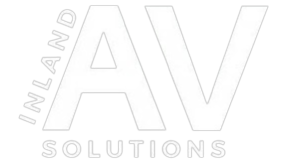In a world driven by tech, seamless communication, collaboration, and entertainment depend on high-quality audio-visual (AV) systems. Who makes sure av systems work flawlessly in conference rooms, classrooms, entertainment venues, and beyond? That’s where AV integrators come in.

We specialize in AV integration, helping businesses, organizations, and venues create immersive, user-friendly AV environments. But what exactly does an AV integrator do? Let’s break it down.
🎯 What is AV Integration?
AV integration is the process of designing, installing, and configuring audio-visual systems to work together smoothly. It involves more than just setting up speakers or projectors—it’s about creating a cohesive AV ecosystem that enhances communication and efficiency.
🔧 What Does an AV Integrator Do?
AV integrators handle everything from designing and installing systems to troubleshooting and maintaining them. Their responsibilities typically include:
✅ Consultation & System Design – Understanding client needs and creating custom AV solutions. ✅ Equipment Selection – Choosing the right displays, projectors, speakers, microphones, and control systems. ✅ Installation & Configuration – Physically setting up and integrating all components. ✅ Networking & Software Integration – Ensuring AV systems work with existing IT infrastructure. ✅ Testing & Calibration – Fine-tuning audio and video quality for peak performance. ✅ User Training & Support – Teaching clients how to use their new AV systems effectively. ✅ Ongoing Maintenance & Upgrades – Keeping systems up-to-date and troubleshooting any issues.
📍 Where Are AV Integrators Needed?
AV integrators work across a variety of industries, tailoring solutions for different environments:
🏢 Corporate Spaces – Conference rooms, boardrooms, video conferencing setups. 🎓 Education – Smart classrooms, auditoriums, distance learning solutions. 🎭 Entertainment & Hospitality – Theaters, stadiums, hotels, event venues. 🛍 Retail & Commercial – Digital signage, background music systems. 🏥 Healthcare – Telemedicine systems, patient information displays. ⛪ Houses of Worship – Live streaming, PA systems, presentation displays.
🎛 Why Hire an AV Integrator?
Hiring a professional AV integrator ensures your technology is reliable, scalable, and easy to use. Here’s why it’s a game-changer:
🔹 Seamless Integration – No more tech headaches; everything just works. 🔹 Future-Proof Solutions – Scalable systems that grow with your needs. 🔹 Expert Troubleshooting – Quick support for any AV challenges. 🔹 Enhanced Collaboration – Boosts productivity in business and education. 🔹 Professional-Quality AV – High-quality sound and visuals for immersive experiences.
